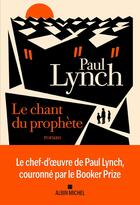-
Date de parution : 01/09/2015
-
Editeur :
Cape, Jonathan
-
EAN : 9780224101806
-
Série :
(-)
-
Support :
Papier
Résumé:
Cecil Beaton's sense of style and his much-celebrated career as a designer for film and stage have overshadowed his position as one of the great photographers of the twentieth century. Beaton's persona provided a mask that concealed the seriousness of his accomplishment. His career, running from... Voir plus
Cecil Beaton's sense of style and his much-celebrated career as a designer for film and stage have overshadowed his position as one of the great photographers of the twentieth century. Beaton's persona provided a mask that concealed the seriousness of his accomplishment. His career, running from his earliest pictures in the Twenties to his last work in the Seventies, is unparalleled in its historical breadth. By mid-century he had produced an astonishing array of portraits of the greatest creative figures of his time, including Picasso, Gertrude Stein, Lucian Freud and Francis Bacon. In contrast to the flamboyance and artifice of his early work, Beaton later displayed an almost minimalist eye.
Beaton was to become a star on both sides of the Atlantic. He was at home in Hollywood studios as he was in English society. He maintained his role as royal portraitist, photographing the Queen at the same time as he courted the new royalty of the Swinging Sixties. Surprisingly he was commissioned to photograph the set of the film Performance and its star, Mick Jagger in 1968. The film marked the end of an era, as well as Beaton's last great assignment.
The book is drawn mostly from the 100,000 prints and negatives of the Cecil Beaton Studio Archive at Sotheby's and follows the definitive monograph of his work during the war years, Theatre of War, published in 2012.
Donner votre avis















